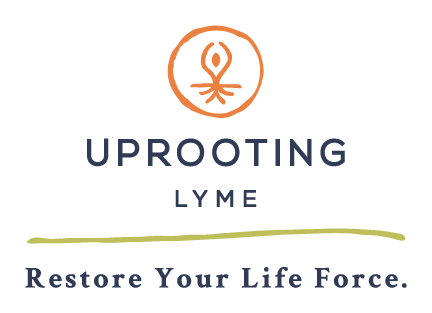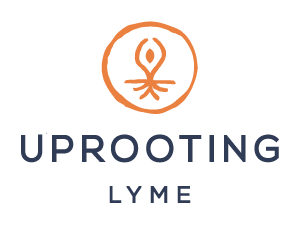Lyme Disease Treatment: Considerations For The Use of Antibiotics
This article will primarily focus on some of the issues with taking antibiotics, as treatment of Lyme sometimes involves protracted courses of antibiotics. From the perspective of natural medicine, there is often a better way to treat bacterial infections than taking antibiotics. Typically this involves taking a formulation of herbs that has antibiotic medicinals combined with those that promote the body’s response to the infection (for example, they promote sweating), as well as herbs to strengthen the immune system, engender fluids, and clear heat so that the fever does not damage body tissues (all of this hastens and ensures a complete recovery). This way, you avoid the problems of latency, bacterial resistance and re-growth that are associated with pharmaceutical antibiotic treatment.
Lyme disease is a rare exception to this rule. Because Lyme is notoriously recalcitrant for a variety of reasons that will be discussed shortly, it is dangerous not to do all that can be done to treat it, and as soon as possible in the course of the disease. Please refer to another blog article What You Need To Know About Lyme (and your doctor may not tell you) for information regarding taking antibiotics for the acute stage of Lyme Disease. Sometimes Lyme becomes a chronic disease, meaning that symptoms persist for many months or even years following initial treatment. Mainstream medicine (i.e. the Infectious Disease Society of America who writes the guidelines that doctors across the country follow) does not yet acknowledge that Lyme infection can persist beyond the routine 3 weeks of antibiotic treatment. The reasons for this are complex, more politics than science-based, and beyond the scope of this article. Medical doctors who do treat chronic Lyme employ antibiotics, sometimes given through an IV. Antibiotic treatment can be long-term – months or even years. If a person requires such treatment, here are some things to be aware of:
Antibiotics alter our body’s delicate balance of beneficial bacteria (which keep harmful bacterial overgrowth at bay). This can cause an array of GI disorders, including chronic infections of the gut, leaky gut and malabsorption syndromes, and weak digestion. Such infections can be severe and very difficult to treat. IF YOU DEVELOP DIARRHEA OR OTHER SYMPTOMS, GET IT DEALT WITH RIGHT AWAY. You will likely need to seek the help of a natural health practitioner, because conventional medicine will only employ more antibiotics or anti-fungals which may not be the best idea, and may make the situation worse.
Always take a probiotic supplement twice per day while on antibiotics and eat plenty of fermented foods.
Some people experience a Herxheimer reaction when they first begin antibiotics. This usually presents as a worsening of typical Lyme-related symptoms, such as fever, rash and pain; it can be mild or severe. It is caused by “die-off,” toxins released by the death of the spirochetes. Ways to lessen the severity of a Herx response include taking high doses Vitamin C (3-5 grams/day), oral charcoal, liquid bentonite, and moving the lymph via light exercise on a rebounder or massage.
The Borrelia spirochetes that cause Lyme disease are brilliant concealers who in response to the presence of antibiotics can convert themselves into a protected spore that is not easily penetrated by the antibiotics. In chronic Lyme, they may also form biofilm, which is a colony-matrix where Borrelia can exist as spores and as active spirochetes inside a protective film unreachable by the antibiotics. All this is to say that antibiotics alone, even very potent long-term protocols may not be enough. As is often the case, the best treatment involves the use of herbs, enzymes, and other natural substances in conjuction with the antibiotics. More on this in Part II of this article.
Over time the antibiotics may lower white blood cell counts (causing weakened immunity), liver toxicity, or cause new symptoms or old symptoms to worsen. Read about the side-effects of the pharmaceutics you are on so that you know what they are. If a person’s condition begins to worsen after being on antibiotics for a while, it is usually time to take a break, and work on strengthening and detoxifying the body for a while.
Remember, ingesting antibiotics whether it’s via an IV or orally directly assaults the gut, which houses 80% of our immune system. Taking antibiotics long-term weakens the very system whose function it is to eradicate Lyme. Antibiotic treatment may be necessary for a time, but there also comes a time for weaning down or stopping them, either when symptoms cease, or when they plateau or if they begin to worsen. At that point it is imperative to strengthen back the organs and immune system. The end phase of treatment for Lyme is about achieving optimal health and immunity, which can only be accomplished via lifestyle and other natural means. Read more about treatment with natural medicine here.
As always, we welcome your comments, questions, feedback, and experience.
If you are confused about whether to continue antibiotics, go the “natural route,” or something in between, call us at 845-687-6211 or email info@uprootinglyme.com to set up an in-person or virtual holistic Lyme consultation at reasonable rates. We’ll help you navigate your treatment options and co-create a strategic holistic treatment plan that will address whether antibiotics is right for you at this time. It’s best to make an expert-informed decision (we find the best solution for patients in this quandary every day) than try to figure it out on your own, so… Contact us now!





